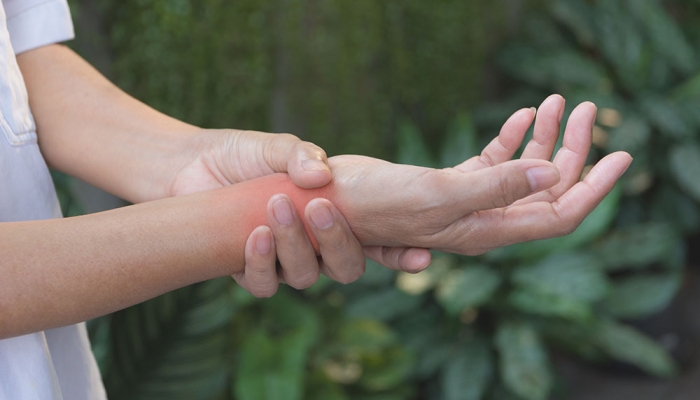What Causes Carpal Tunnel Syndrome and How Is It Treated?

If you have numbness, tingling, or pain in your hand or arm, you may have carpal tunnel syndrome. It’s important to see a doctor if you have these symptoms because if the problem isn’t treated, it will get worse, and you can develop nerve damage.
People develop carpal tunnel symptoms when the median nerve is compressed. This is a nerve that gives feeling to all our fingers except the pinky. It also controls some muscles around the base of the thumb.
To understand what’s happening when people develop carpal tunnel syndrome, we need to think about the anatomy of the wrist. There is a “tunnel” about 1-inch wide through which the median nerve travels to reach the hand. Bones make up the bottom and sides of that tunnel, and the transverse carpal ligament bounds the tunnel on the top.
When there’s not enough space in that tunnel, the median nerve gets pinched. This can happen because of swelling in tissues in the wrist. When the nerve is compressed, the symptoms start, mainly pain, tingling, and weakness.
Several factors increase the risk of developing carpal tunnel:
- Sex. Women are more likely to have carpal tunnel syndrome than men.
- Age. Being older raises the risk.
- Heredity. Just as some people inherit blue eyes and short stature, some naturally have smaller carpal tunnels.
- Repetitive hand motions that you may perform as part of a job or hobby, or extreme flexion or extension of the hand and wrist.
- Pregnancy.
- Diabetes.
- Rheumatoid arthritis.
- Thyroid gland problems.
If you develop carpal tunnel syndrome symptoms, your doctor will probably first try treating it with a brace or splint, nonsteroidal anti-inflammatory medicine (such as ibuprofen), a change in activities, and steroid shots.
If these don’t provide enough relief, you probably need a type of surgery called a carpal tunnel release. In this operation, the transverse carpal ligament that bounds the top of the carpal tunnel is cut in two. This makes more room for the medial nerve and relieves the pressure on it. Over time, the ligament may grow back together, but the extra space for the nerve will remain.
The surgery is an outpatient procedure, which means you will go home the same day. You can expect some pain and swelling after the surgery. Your doctor will recommend pain medicine and exercises to keep your fingers from getting stiff.
You’ll be able to use your hand, but carefully, in the first few weeks for activities like driving, writing and self-care.
It may take a few months—or up to a year if your carpal tunnel syndrome was advanced—before your full strength returns after surgery. Depending on how your recovery is going, you may need to see an occupational therapist for hand and wrist exercises.
If you’re wondering if you’d benefit from carpal tunnel surgery, feel free to contact one of our orthopedic specialists for an evaluation.
Specialty Surgical Center is located in Sparta, New Jersey, and our staff consists of board certified surgeons and anesthesiologists performing procedures in orthopedics, sports medicine, spinal care, podiatry, urology, pain management, ENT, hand surgery, lithotripsy, brachytherapy, GYN, and laser surgery.
For more information about Specialty Surgical Center, call 973-940-3166 or visit our Contact Page.
The information contained in this article is for educational purposes only and is not intended to replace or counter a physician’s advice or judgment. Please always consult your physician before taking any advice learned here or in any other educational medical material.